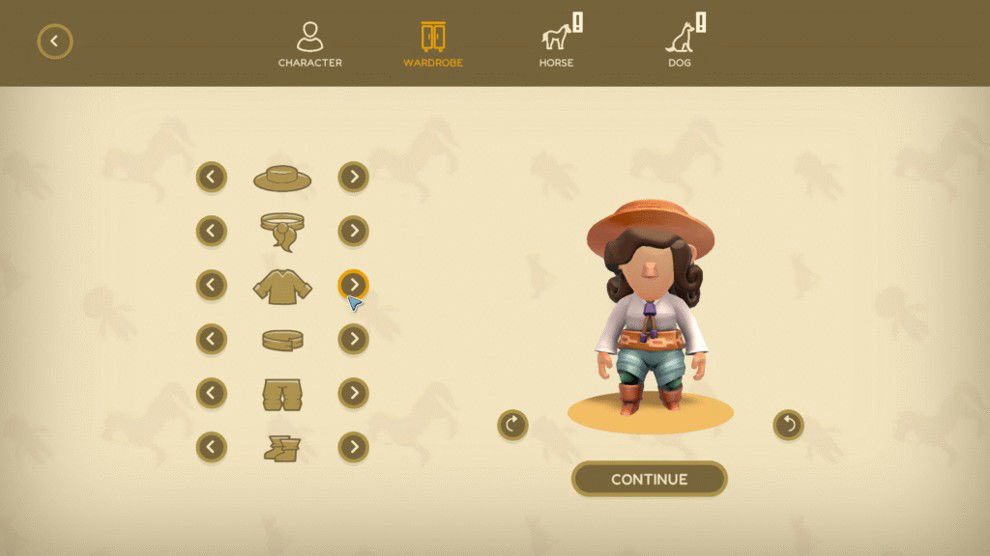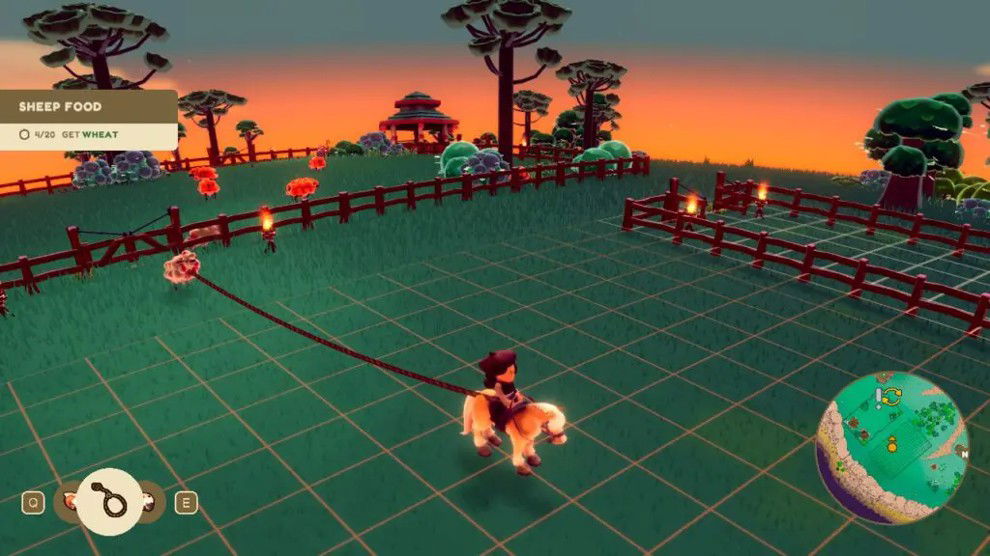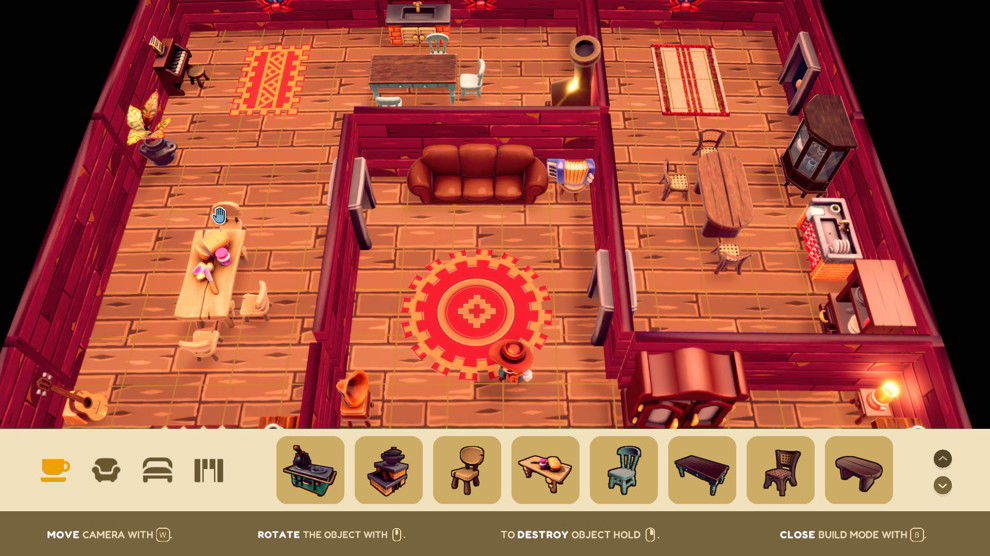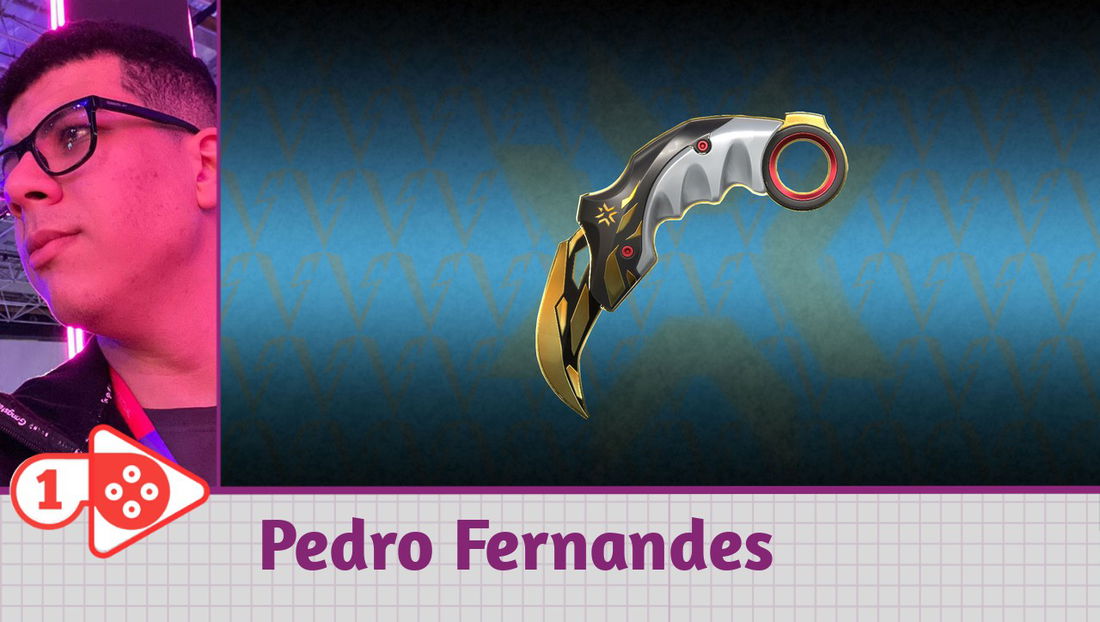To be honest, I don't know much about the culture of the “gauchos” (sort of Latin-American cowboys) of Southern Brazil. I don't understand much about bombachas (typical regional clothing) or chimarrão (I drank it once and it tasted like nothing), but I do know about cozy games and farm management sims. And this is the case with Gaúcho and The Grassland, a Brazilian indie game developed and published by Epopeia Games (official website)
.
Instead of a farm left to you by your dead grandfather (the most basic story for games of this type, like Stardew Valley), you receive your recently deceased father's hat, which transforms you into a legendary (and mustached) gaúcho. You're tasked with bringing order to the regions surrounding your property, which are experiencing trouble due to the disappearance of their guardians.
And do you want to know if it's worth embarking on this adventure in Southern Brazil, facing local folklore legends such as curupiras and sacis while tending to your farm and making it prosper alongside a friendly puppy and a brave horse? Let's talk about Gaúcho and the Grassland, and if you have any questions, leave a comment.
Gaúcho and the Southern Pastures
The game starts off with character creation, in a cute, cartoonish style. You create your own gaúcho or gaúcha, choose from several mustache options, and customize your horse, dog, and clothes. Then, you'll get to play. You go mourn your father's body, and his ghost will appear to give you his hat and his land. The tutorial teaches you how to make tools, repair your house, craft objects, and how your dog helps sniff out objects to dig up more materials for crafting more tools.

After he teaches you how to control your horse and finally explains that your family is part of a group that cares for and protects the place from supernatural creatures. He gives you the key to open one of two new starting regions that will lead you to meet new and interesting people, who have been having problems, and a place guarded by a monster, which you'll be able to open after helping some people and completing some quests.
Simple and functional
To really summarize the game, we can say that Gaúcho and the Grassland is quite simple. Here, you'll spend most of your time gathering resources with tools made from increasingly precious and rare materials, and this’ll give you access to rarer and more precious resources to build things for your farm or to complete quests by helping people.
One of the game's most interesting choices is that there's no money. Everything works through bartering - you exchange items, favors, or materials instead of buying or selling. This changes a lot on how you think about your actions, since each quest can give you important items for other tasks, and everything’s interconnected.
Gathering resources isn't just for building things on your farm but also for helping other residents and getting items you wouldn't be able to get on your own. This mechanic reinforces the idea that progress happens in community and fits well with the game's rural atmosphere. It's not just about accumulating wealth or automating production, but about building relationships with those around you.

So, the quests here are a true mix of taking care of your property, helping others, and doing your job as a guardian of national folklore figures. At first, it seems like you'll spend a significant amount of time mending fences for people, having disputes over lost animals, or setting out small fires. The quests may not be particularly exciting, but they add meaning to the game over time.
Narratively, it's a very familiar structure, and mechanically as well. You get to a region, examine a maze in the middle of it that's currently guarded by a large monster, and then decide how to help at least seven citizens from each of those regions with their many problems. Rinse and repeat the same cycle for each of the three available areas in the game.
On top of all of this, the game also features the aforementioned crafting, farming, and building systems. Even though it seems like an important element, it can be left aside to focus on the helping quests and the rewards you'll receive. While gathering resources and crafting tools are essential for most quests (you'll always need more grass to make more rope), creating buildings on your farm and bringing animals back to the barns is only really necessary for a few quests in each area.
These quests unlock the ability to add new buildings and animals to your own property, which you visit between regions, but there's no real incentive to invest your time or resources here. This can create some differences between the game's expectations and reality and disappoint those who were hoping to make their livestock farm something bigger and better for the game.
Folklore Time
Each of these unlockable areas represents a different biome in Southern Brazil, with unique climates, vegetation, and characters. The pampas are wide and open, the mountains offer colder climates and rugged terrain, while the coast offers flooded areas and fog-covered trails. Each region has its own music and quests with a different rhythm, which helps to break the repetitive cycle of gathering resources and solving problems a little. This visual and sound variation helps bring the game world to life, even though the tasks still follow the same basic format.

After helping a specific number of people needed to progress through the region, you can investigate the labyrinth, which involves repairing totems to scare away the monster hiding in it. You can then go to the realm of the guardians, those we know as Curupira and Saci, among other iconic figures from Brazilian folklore, and put an end to all the chaos caused by the monsters. These parts of the game sound much more interesting: each guardian is in a different situation, which involves solving a different puzzle to free them.
The boss “battles” and guardian encounters, happening in interesting scenarios combined with the characters' cute cartoonish style, provide a more visually appealing experience than the mostly foggy regions where you spend most of your time.
The music throughout the game ranges from appropriately upbeat to something a bit more tense, adding more of a sense of alertness to these sections.
The Less Shiny Side
The game's pace can be challenging for some players. Even though it's a cozy game, the beginning is particularly slow, with quests that drag on beyond the necessary and overly simple tasks, like repairing fences or repeatedly searching for common resources. It takes a while for the most interesting parts - such as encounters with folklore guardians or maze puzzles - to really kick in. For those expecting something more dynamic, the start can feel drawn-out and discouraging.

Another point that limits the experience is the quests’ structure. Despite the visual changes between biomes, what you actually do in them doesn't change much. You go to a new region, meet some new characters, solve the same types of problems, unlock the maze, and repeat the cycle. The stories in each area aren't bad, but the objectives’ repetition can give off a feeling of constant déjà vu. Interactions with NPCs are also shallow, with short lines and little narrative impact, which lowered the emotional potential the game could achieve with such a stylized cast.
Ultimately, exploration doesn't deliver on its promises. The map is big enough to encourage curiosity, and your dog can sniff out hidden items, but most of the rewards end up being common materials you can easily find anyway. There are no secrets, unique chests, or special events off the main path, making wandering the landscape feel more like an obligation than an adventure. Also, the interface, especially with mouse and keyboard, can be a bit overwhelming, with menus that require more actions than they should to perform simple tasks.
Pros and Cons
Pros
• Catchy music;
• Relaxing pace;
• Not very long;
Cons
• Not an exciting game
• The farm aspect takes a back seat
Conclusion
The gameplay loop is clearly defined, and even though many of the quests aren't as exciting as in other games of the genre, there's something oddly relaxing about the pace at which Gaúcho and the Grassland progresses. The cast of characters is colorful, though maybe not memorable, and movement through the environment is satisfyingly smooth, especially while riding your trusty steed. The game isn't too long, either, and you can finish Gaucho and the Grassland in four hours, unless you want to spend more time customizing your property or helping more people.
If you enjoy farming games and cozy sims, you might find that Gaucho and the Grassland is a fun way to kill a few hours. It might not redefine the genre, but if you don't mind mending a few (dozen) fences between raising chickens and building barns, then this game’s a good way to spend your time.












— Comments 0
, Reactions 1
Be the first to comment